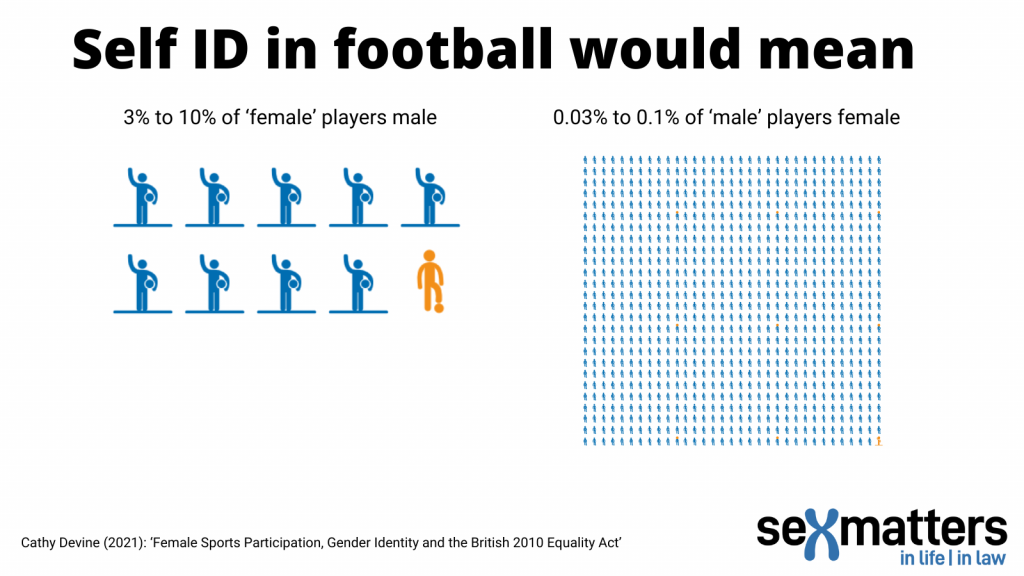Women in sport, gender identity and the Equality Act

Cathy Devine’s article ‘Female Sports Participation, Gender Identity and the British 2010 Equality Act’ was published in the journal Sport, Ethics and Philosophy (open access version).
In this guest post, Cathy Devine explains her findings on the impact of “self-identification eligibility criteria” on women in sport.
If the criteria for who can compete as a woman or a man were changed to self identification of “gender” this would lead to an increase – possibly as much as a hundred-fold in some sports – in people who are biologically and legally male, mostly without medical transition, in female categories. This is because most transgender people are male, most sports are male dominated, and a relatively large number moving from a large pool into a small pool makes a disproportionate difference to the small pool.
For all competitive team sports, the number of transgender (biologically male) participants in female categories could range from one in a hundred to one in twenty-five, whereas the number of transgender (biologically female) participants in male categories doesn’t go above one in five hundred. The percentage of transwomen footballers in female categories would range from 3% to 10%, whereas the percentage of transmen footballers in male categories would be a hundredth of this.

“Sex and gender identity data should not be conflated.”
Self-identification eligibility criteria undermine the proportionate and lawful means of achieving the legitimate aim of including females in sports participation, via legally protected female categories in ‘gender‘ (meaning sex) affected sports.
Eligibility criteria based on gender identity rather than biological sex in these sports do not therefore appear justified, balanced, or even possibly legal in Britain. Many females do not identify as feminine, but recognise themselves as biologically female. So they might be excluded from categories based on feminine gender identities rather than female biological sex. Consequently, self-identification eligibility policies at participation levels may constitute an ‘intolerable injustice’, which indirectly and unlawfully discriminate against female participation in ‘gender affected’ sports.
“Many females do not identify as feminine […] so they might be excluded from categories based on feminine gender identities rather than female biological sex.”
Retaining dedicated female categories and replacing “male” with “open” categories may be the fairest way to balance inclusion claims. This maximises transgender inclusion given that most transgender people undertake no medical transition. Sports councils and governing bodies for sport should distinguish between biological sex, legal sex, and gender identity when collecting sports participation data. Sex and gender identity data should not be conflated.
Sports councils, sports organisations and sports insurers should ensure compliance with both the law and Sports Council Equality Group Guidance regarding their investment decisions and the grant-aiding of public money to governing bodies of sport and other organisations.
